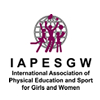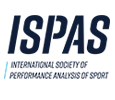Guidance for Authors
Please Note: This journal ceased in October 2020
Manuscript Submission Criteria
Language
All manuscripts must be submitted in English. Contributors whose first language is not English are encouraged to consult an English language specialist to see if a manuscript is at a suitable standard for submission for consideration. Articles that are not at an appropriate level of English will be returned without being considered for the review process.
Originality Manuscripts are considered for publication only on the understanding that they are not simultaneously under consideration elsewhere, that they are the original work of the author(s), and that any previous form of publication and current consideration in other languages are disclosed at the time of submission. Please attach to every submission a letter confirming that all authors have agreed to the submission and that the article is not currently being considered for publication by any other journal.
Conflict of interest
Please identify any sources of funding etc. that may identify a conflict of interest in the article. If you are in any doubt regarding such disclosure, please contact the editorial office at gjseper@worc.ac.uk.
Submission and Privacy Notice
Articles should be submitted by email to gjseper@worc.ac.uk in Microsoft Word format. When you submit an article for consideration to the GJSEPER, we will enter your name and email address into a database of submissions, held on password protected University of Worcester computers and on a secure shared drive accessible only by the Editor-in-Chief, the editorial assistant and the University IT department. We will use this email address to communicate with your regarding the progression of your article throughout the review process and as such it is mandatory to provide your email for this purpose. If your article is published in the GJSEPER, your email address will be included as a hyperlink on the article pdf with you identified as the corresponding author. If you do not want your email address to be included in the published article, please let us know via gjseper@worc.ac.uk and we will not include it. We will use your email address from the database to alert you when new articles are published on the GJSEPER website. If you do not want us to use your email address to receive these email alerts please let us know via gjseper@worc.ac.uk and we will not include you in these alerts. If you wish to have your email address removed from the GJSEPER database at any time, please let us know via gjseper@worc.ac.uk sending an email to us with ‘UNSUBSCRIBE’ as the subject. The University of Worcester is the "data controller" for this data. This means that we are accountable for how the data we hold about you is processed and who it is shared with.. The University has a Data Protection Officer, whose contact details are: Helen Johnstone, Head of Information Assurance (infoassurance@worc.ac.uk). If you need to contact us about your data in the first instance please contact gjseper@worc.ac.uk. For queries in relation to your various rights and the data we hold about you please contact the University's Data Protection Officer.
Authorship Criteria:
GJSEPER aims to comply with to the International Committee of Medical Journal Editors (ICMJE) requirements or authorship. GJSEPER considers authorship to be based on satisfaction of the following four criteria:
1. Substantial contributions to the conception or design of the work; or the acquisition, analysis, or interpretation of data for the work; AND
2. Drafting the work or revising it critically for important intellectual content; AND
3. Final approval of the version to be published; AND
4. Agreement to be accountable for all aspects of the work in ensuring that questions related to the accuracy or integrity of any part of the work are appropriately investigated and resolved.
In addition to being accountable for the parts of the work they have done, an author should be able to identify which co-authors are responsible for specific other parts of the work. In addition, authors should have confidence in the integrity of the contributions of their co-authors.
All those designated as authors should meet all four criteria for authorship. Individuals who contributed to the work, but whose contributions were not of sufficient magnitude to be listed as authors should be properly acknowledged, usually in an acknowledgements section.
For the full ICMJE guidance please go to: http://www.icmje.org/recommendations/browse/roles-and-responsibilities/defining-the-role-of-authors-and-contributors.html
Manuscripts
As GJSEPER welcomes research articles from across many disciplines, we do not wish to be overtly prescriptive regarding the manuscript format. However, primary research articles (between 3000 and 5000 words) must be logically structured considering appropriate disciplinary standards.
Articles must contain:
- Title page with author names and affiliations;
- An Abstract of 150-300 words and 5 keywords (words that may be suitable as search terms in academic search engines and words NOT used in the title of the article);
- An Introduction which clearly rationalises the need for the research to have been undertaken and culminates in a clear statement of the purpose/aims of the article. This introduction should contain only pertinent references to make the case for conducting the research and does not need to be a comprehensive review of all of the literature available for the subject;
- A Method section which must be presented in a logical sequence appropriate to the nature of the study conducted and which should permit the methods employed in the study to be replicated elsewhere from the detail given. If the research involves human participants, this section must include a clear statement of how ethical approval for the research was obtained and from whom. As appropriate the method section may include details of participants, procedures, protocols, and data handling and/or statistical analysis;
- A Results section (if appropriate to the discipline and nature of the study) that clearly illustrates the key findings of the study directly in relation to the stated aims/purpose provided in the introduction. This may necessitate figures, tables, illustrations, results of statistical test and results of qualitative data handling procedures;
- A Discussion section that should emphasize, discuss in relation to other previous literature and highlight the implications of the new and important findings of the study. In doing so, this section should contain evidence of the identification and appreciation of any limitations of the study undertaken and propose any revisions to the study that would address some of these limitations were the research to be replicated in future;
- A Conclusion section that should succinctly restate the key findings and main implications of the research and conclusions;
- A First Author's Biography section of up to 200 words that should detail your current position/role and include confirmation of the degree to which this research contributed (or is still contributing) and the approximate dates when the data were collected.
- An Author Contribution Statement in which you use author initials for each author to identify their specific contribution and explicitly relate these to the four numbered criteria required for authorship.
- An Acknowledgements section in which you should provide any acknowledgements you would like to make to any other persons/organisations who are not named authors, but who may have contributed to some aspect of this research.
- A Reference list containing only those sources that have been cited within the article and formatted according the guidance given below;
- Figures and tables should be submitted as an additional separate document with suggested placement of the figures and tables identified clearly in the text of the article. Tables should preferably be submitted in Word or Excel format. Figures should be submitted in jpg format.
Review articles are normally at the invitation of the Editor-in-Chief, but if you wish to submit a review article to GJSEPER, please first contact the journal to see if your article would be considered.
Copyright and permission:
Permission to use the work of others that has copyright attached is the sole responsibility of the authors. GJSEPER will not be held responsible for any action taken against any authors who provide for publication any materials for which they do not have the required permission. Authors who publish in GJSEPER retain copyright to their work. Submission of a manuscript requires that all authors have read and agreed to the content of the article and it's publication in GJSEPER and it is a condition of publication that manuscripts have not been published and will not be published elsewhere. Plagiarism is strictly forbidden, and by submitting the article for publication the authors agree that the publishers have the legal right to take appropriate action against the authors, if plagiarism or fabricated information is discovered. Once submitted to GJSEPER, the author will not withdraw their manuscript at any stage prior to publication, unless with written permission to do so from the Editor-in-Chief. Published articles are licensed under the terms of the Creative Commons Attribution-NonCommercial-NoDerivs 3.0 Unported License which permits unrestricted, non-commercial use, distribution and reproduction in any medium, providing that the work is properly cited. The recommended article citation will be included on each published article.
Quotation and referencing:
Quotations used in the text:
All quotations used should be contained within single parenthesis if quotations of written sources, and double parenthesis is quotations of spoken sources. Quotations of 35 words or more should also be displayed as indented text.
Format for references within the text:
Identify all references at an appropriate point in the main text, by citing the author's last name, year of publication, (and pagination for direct quotations), all within parentheses. Specify subsequent citations of the same source similarly; do not use 'ibid.', 'op.cit.' or 'loc.cit.'. If the author's name is in the text, use only the year of publication in parentheses, e.g. Hardman (1995) argued... If the author's name is not in the text, include both the author's name and year of publication separated by a comma within the parentheses, e.g. (Peters, 2005). Pagination follows year, e.g. (Peters, 2005: 45-6). With dual authorship give both names: for three or more use 'et al.', e.g. (Peters and Hardman, 2004) and (Hardman et al., 1998). If there is more than one reference to the same author and year, distinguish between them by use of the letters 'a', 'b', etc. attached to the year of publication e.g. (Peters, 2004a; Peters, 2004b) with alphabetical order in the reference list is based on the surname of the second or third author A series of references should be enclosed within a single pair of parentheses, separated by semicolons, and arranged in chronological order e.g. (Hardman et al., 1998; Peters, 2005).
Format for reference list:
List all entries cited in the text, alphabetically by author and year of publication in a separate section headed Reference List. Please follow the formatting examples given:
- Book:
Giddens, A. (2009) Sociology (6th ed.). London: Polity Press.
- Edited book:
Bairner, A. & Molnar, G. (eds.) (2010) The Politics of the Olympics: A Survey. London: Routledge.
- Book chapter:
Lenskyj, J. (2010) Olympic Power, Olympic Politics: Behind the Scenes, In A. Bairner & G. Molnar (eds.) The Politics of the Olympics: A Survey. London: Routledge.
- Journal article:
Molnar, G. & Maguire, J. (2008) Hungarian Footballers on the Move: Issues of and Observations on the First Migratory Phase. Sport in Society 11(1): 74-89.
- Newspaper article:
Slapper, G. (2005) Corporate Manslaughter: New Issues. The Times, 3 Sep: 4.
- Website:
National Autistic Society. (no date) Asperger Syndrome: What is It? [Online]. Available at: http://www.nas.org.uk/asperger [Accessed: 11th November 2008].
- Video:
Health for All Children 3: The Video (2004) [video] London: Child Growth Foundation.
Please note that GJSEPER makes no representation or warranty whatsoever as to the accuracy, completeness, or suitability for any purpose of the content of any article. Any opinions and views expressed in articles published in GJSEPER are the opinions and views of the authors, and are not the views of or endorsed by GJSEPER. The accuracy of the content of any article should not be relied upon and should be independently verified with primary sources of information. GJSEPER will not be liable for any losses, actions, claims, proceedings, demands, costs, expenses, damages, and other liabilities whatsoever or howsoever caused arising directly or indirectly in connection with, in relation to or arising out of the use of the content of any article.
Contact
Please contact us using the email address below: Email GJSEPER






